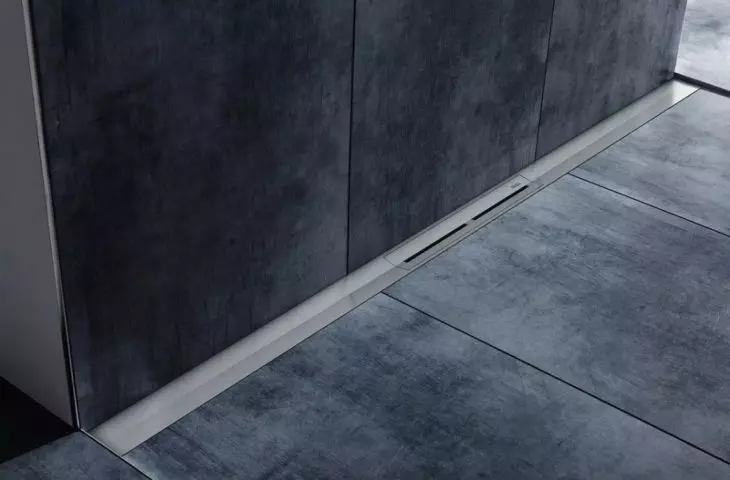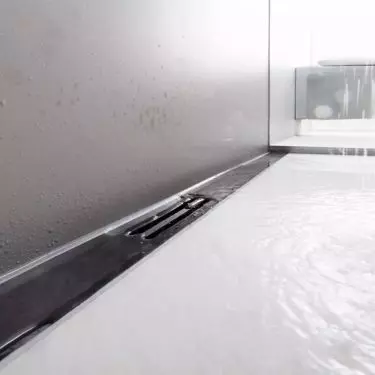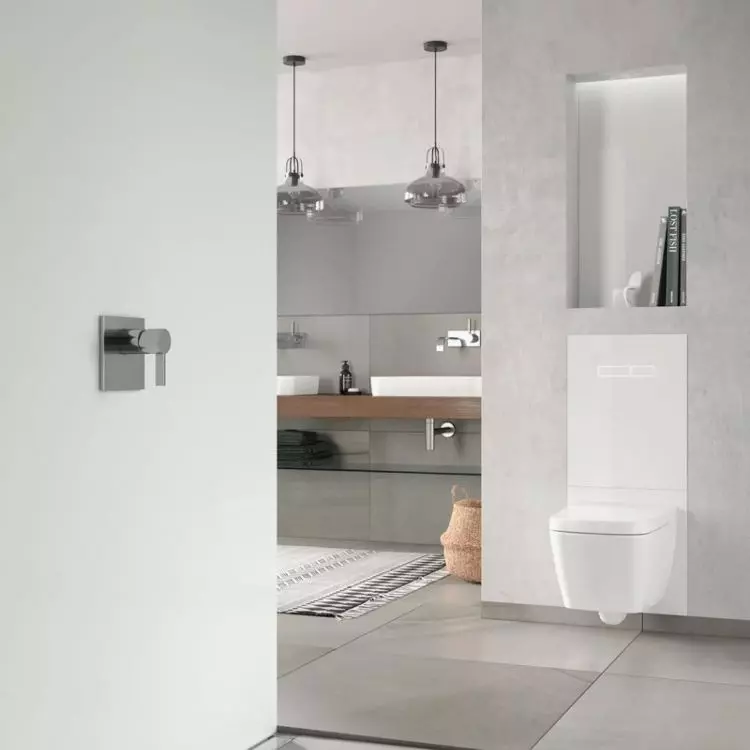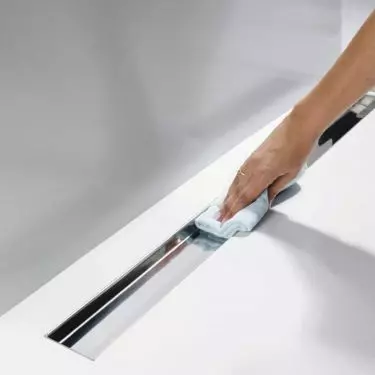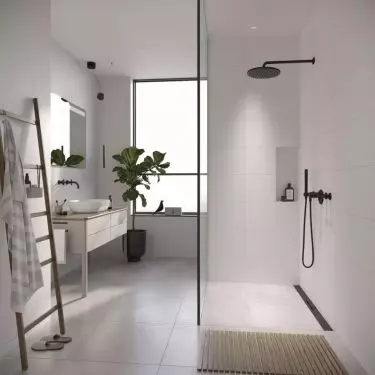The drain, although small, plays a key role in the functioning of any bathroom. It's an element that we often don't pay attention to until it starts causing problems. So it's worth thinking carefully before buying it and considering all available options. How to choose the best drain? We are here to help!
The drain is used to remove used water and waste
© Viega
Products for Home guide
What is a drain?
A bathroom drain is a sanitary fixture that is used to remove used water and waste from a sink, bathtub, shower, or toilet. The drain is usually integrated into the sanitary appliance and is designed to prevent clogged pipes and keep the installation hygienic and efficient. It consists of several basic components, such as a trap, a drain pipe and a plug or strainer that stops larger objects, such as hair or soap residue, from entering the drain pipes. The siphon also has the important function of preventing unpleasant sewer odors from getting back into the bathroom. Bathroom drains come in different sizes and shapes, depending on the type of sanitary appliance they are associated with.
Where to buy a drain?
Choosing a drain from a reliable manufacturer is important, because it must be resistant to moisture, chemicals and heavy loads, so it is important that it is made of durable and corrosion-resistant materials. One such company is Jano. Other manufacturers worth noting are OKEDA and Wiper. The full list of manufacturers we recommend can be found in the search engine of the Products for Home portal under the keyword "drain".
In a walk-in shower, a linear, a wall-mounted, as well as tiles with a built-in drain will work well
© TECE
Types of drains
Linear drain
This type of drain is mainly used in showers. It is a long, narrow slot in the floor of the shower through which water flows into the drain. Linear drains are modern and aesthetically pleasing, as they do not require a traditional drain grate.
Traditional drain
This is the classic type of drain used in bathtubs, sinks and showers. It usually takes the form of a round or square grate, which can be embedded in the floor or wall of the sanitary unit.
Automatic drain
This type of drain is often used in sinks and bathtubs. It has a built-in mechanism that allows you to open and close the drain with a lever, button or knob. This allows water to be retained in the sanitary device.
Drain for countertop washbasin
This drain is usually higher than a standard washbasin drain because it allows water to drain from a higher bowl.
Overflow drain
This type of drain is often used in bathtubs. It has an extra hole or tube that allows water to drain out if the water level gets too high.
Channel drain
This is a type of drain used in pool spaces, terraces or outdoor showers. A channel drain is a long slot in the ground through which water drains into the sewer system.
Spot drain
This is a type of drain that is usually placed in the center of the shower. It ensures even drainage of water.
You can choose a linear, traditional, an automatic, adapted to a countertop basin, with overflow, point or a channel drain
© TECE
Linear drain - wall or wall-mounted?
A wall-mounted linear drain is aesthetically pleasing and modern, as it does not require a traditional drain grate on the shower floor. It is available in many sizes and designs. Because such a shower does not have a threshold, it is safer to use for the elderly or disabled people, as the risk of tripping or slipping is reduced. A wall drain also makes it easier to keep the shower clean, as there is no grate to collect dirt and sediment. Water and residual hygiene products drain directly into the sewer system.To install a linear wall drain, it is necessary to properly prepare the shower wall and install a special frame that holds the drain in place. This drain is a popular choice for modern bathrooms and showers with a minimalist design, but its installation can be more advanced and require the help of a professional plumber or installer.
A wall-mounted linear drain is a type of drain used in showers. It is installed near the shower wall and is more suitable for showers in which water flows toward one of the walls, instead of centrally into a drain on the shower floor. A wall-mounted linear drain also has a modern and minimalist design, which gives the shower a sleek and neat look. As with other types of linear drains, this type of drain makes it easier to keep the shower clean, as there is no traditional grate to collect dirt and soap residue.
Which drain should I choose for a walk-in shower?
A walk-in is a type of shower that does not have a traditional shower tray and is usually open at the front. This allows you to enter it without having to step over a high threshold. A popular choice for this type of shower is a linear drain. For example, the one mounted on one of the walls will work great. Tiles with a built-in drain are also an interesting solution. This is an advanced design, in which the drain is built into the tiles themselves on the floor of the "walk-in" shower.
It is best to clean the drain every few months
© TECE
How big a shower drain should be?
The diameter of a shower drain is usually between 3.8 cm and 5.1 cm. Choosing the right diameter depends on the efficiency of the shower and the expected amount of water that will flow through the drain in one minute. The more efficient the shower, the greater the flow of water through the drain. The appropriate size of the drain must be matched to the performance of the shower to ensure effective drainage.
How to clean the drain?
Start by removing large debris, such as hair, soap or other items that may be lingering in the drain. You can do this by hand or with special tools. It's a good idea to use special drain cleaning liquids, which are available in stores. They are designed to dissolve soap and other contaminants. However, you can also try home solutions. Vinegar or baking soda can help with contaminants or soap. Keep in mind that some of these substances may react with each other, so use them with caution. Pouring hot water down the drain can help too. Remember, however, that the water must be hot, but not boiling. If necessary, you can use mechanical tools to clean the drain, such as pipe cleaners. These are tools that you insert into the drain and use them to remove debris. To avoid problems with the drain, regular cleaning is recommended. This is best done every few months. To protect your drain from debris, install a drain strainer or grate to stop larger objects and hair from entering the drain pipe.
***
We encourage you to use the database of reputable and reliable Bathroom Equipment Manufacturers we are building on the Products for Home portal, as well as the articles we publish about bathroom equipment.



